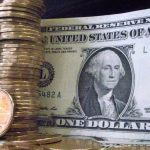Australian dollar managed to trim earlier losses against its US counterpart on trading Wednesday, which were due to considerably weaker than projected construction work done in Australia during the final quarter of 2013, while prices of iron ore, Australias largest export, plummeted to seven-month lows on Tuesday.
Having slid to a session low at 0.8970 at 0:09 GMT, AUD/USD managed to recover from losses to trade at 0.9018 at 7:25 GMT, dipping a mere 0.02% for the day. Support was likely to be found at February 24th low, 0.8938, while resistance was to be encountered at February 25th high, 0.9044.
Prices of iron ore fell for a fifth consecutive day to reach $119.10 per metric ton on Tuesday, or the lowest level since July 1st, data by the Steel Index Ltd. showed.
“There are a number of factors working against the Australian dollar,” said Chris Weston, the Melbourne-based chief market strategist at IG Ltd., cited by Bloomberg News. “If we see a lower iron price, going through that $110 level, I think the RBA has the premise further down the line to re-establish its easing bias,” he said.
At the same time, quarterly Building Activity Survey and Engineering Construction Survey in Australia revealed that construction work done declined 1.0% during the last quarter of 2013 compared to Q3, following a 2.7% increase in the preceding quarter. Analysts had projected that the indicator will show a 0.2% gain in Q4.
Meanwhile, on Tuesday it became clear that confidence among consumers in the United States decreased significantly in February due to concerns over the short-term prospects regarding business conditions, employment and income. According to results from a survey by the Conference Board research group, encompassing over 5 000 US households, the corresponding index of consumer confidence slowed down to a reading of 78.1 in February, after the revised down value of 79.4 in January. Preliminary estimates pointed to an increase to 80.0 this month.
The index of economic expectations fell to a reading of 75.7 in February from 80.8 in the preceding month. The index of current assessment, on the other hand, rose to 81.7 this month, reaching its highest level in almost six years. In January it stood at 77.3.
A separate report by the S&P/Case-Shiller revealed that the index of home prices, which measures the change in selling prices of homes in 20 of the largest cities in the United States, climbed at an annualized rate of 13.42% in December from a year ago, compared to a 13.71% increase in the previous month, the biggest increase since February 2006. Analysts had projected a 13.38% advance. On a monthly basis, home prices dipped 0.1% in December in line with analysts’ forecasts and after another 0.1% drop in November.
According to the report, home prices again reached levels, recorded during the spring of 2004. Rising prices of property and shares probably reflect the improved financial capabilities of US consumers. This have probably led to increased spending, which favors nations economic growth.
New home sales in the United States, a key indicator for current housing market conditions, probably fell 3.4% to the annualized level of 0.400 million in January, according to the median forecast of experts, after in December sales reached the annualized 0.414 million. Official figures are expected to be released at 15:00 GMT today.
Federal Reserve Chair Janet Yellen is expected to take a statement on Thursday, while investors await the central bank’s view on the economic impact of severe weather. Yellen said earlier in February that US economy has gained enough strength in order to withstand reduction of monetary stimulus.
Elsewhere, the Aussie was little changed against the euro, with EUR/AUD cross down 0.01% to trade at 1.5241 at 8:13 GMT. AUD/NZD was losing 0.08% on a daily basis to trade at 1.0820 at 8:16 GMT. The pair earlier touched a daily low at 1.0791, or the lowest point since February 18th.





